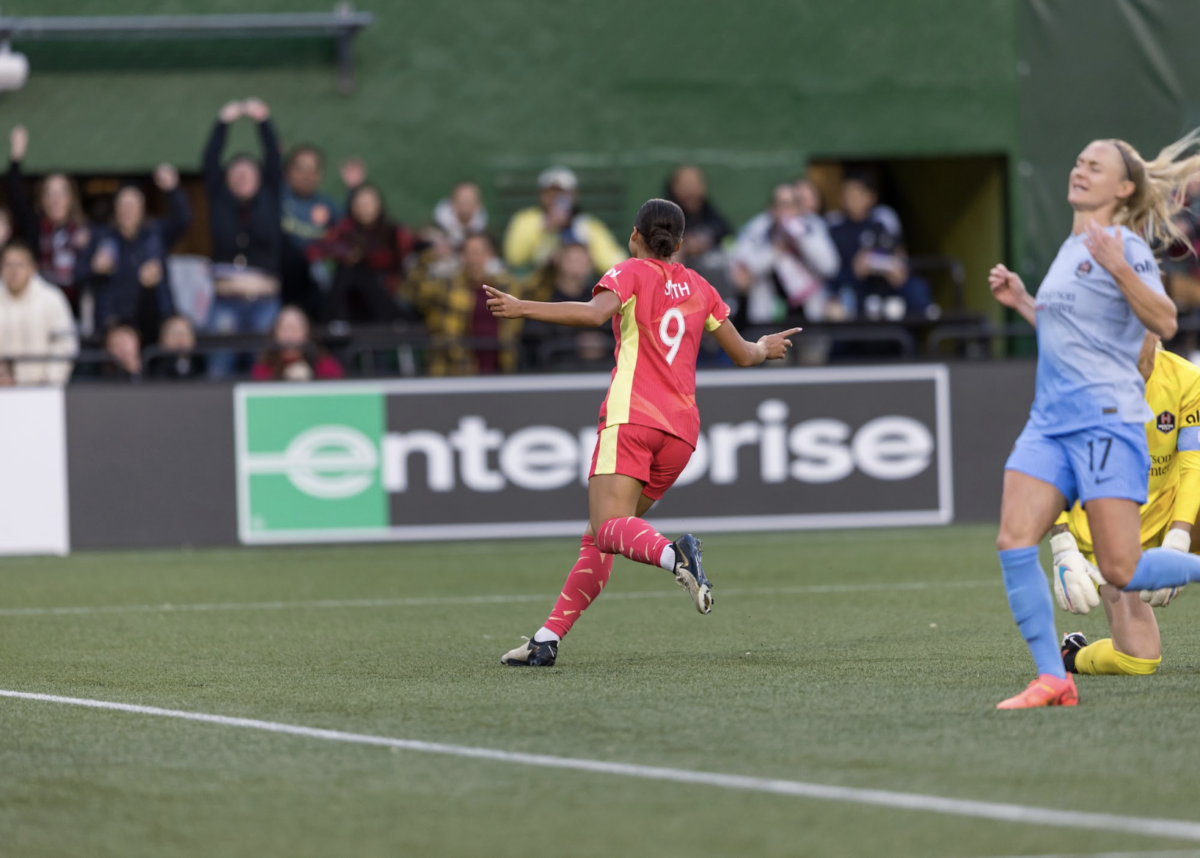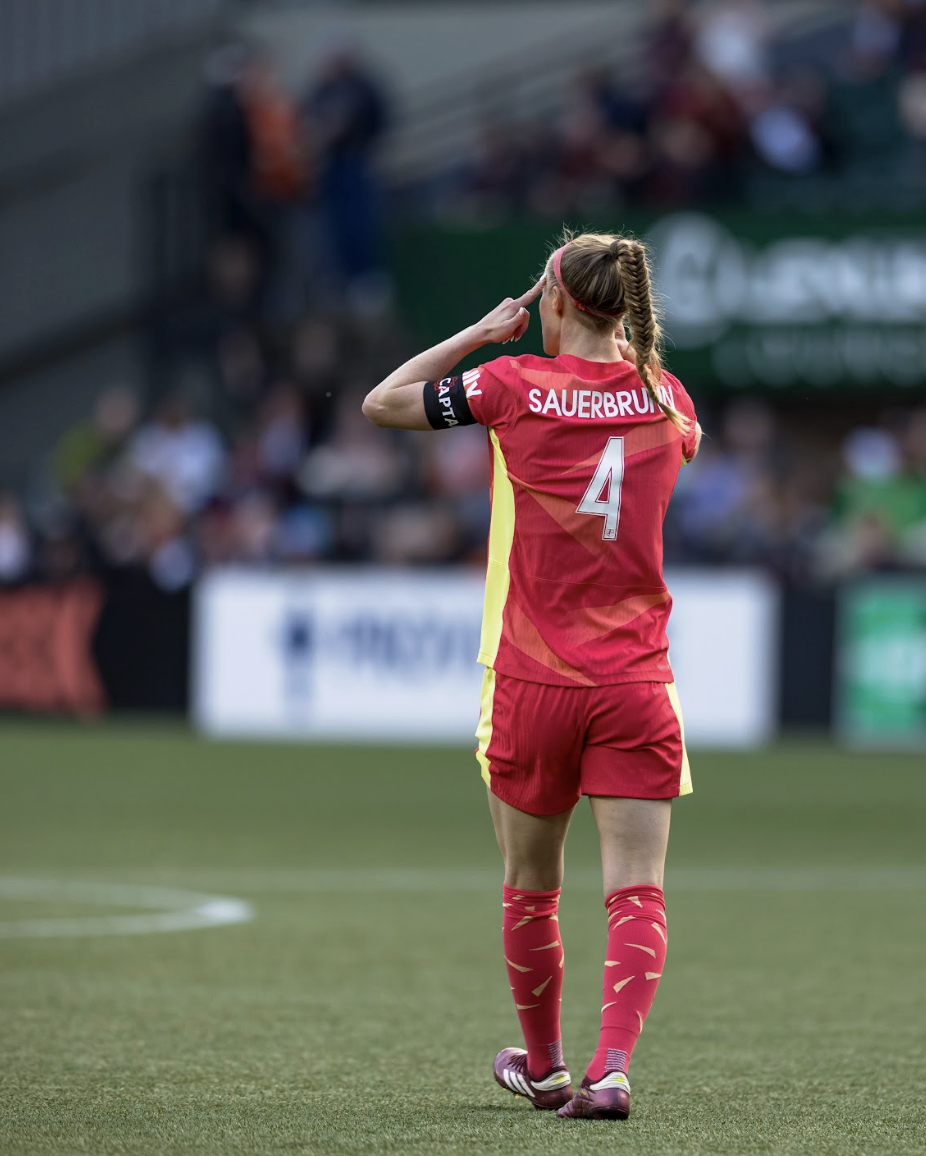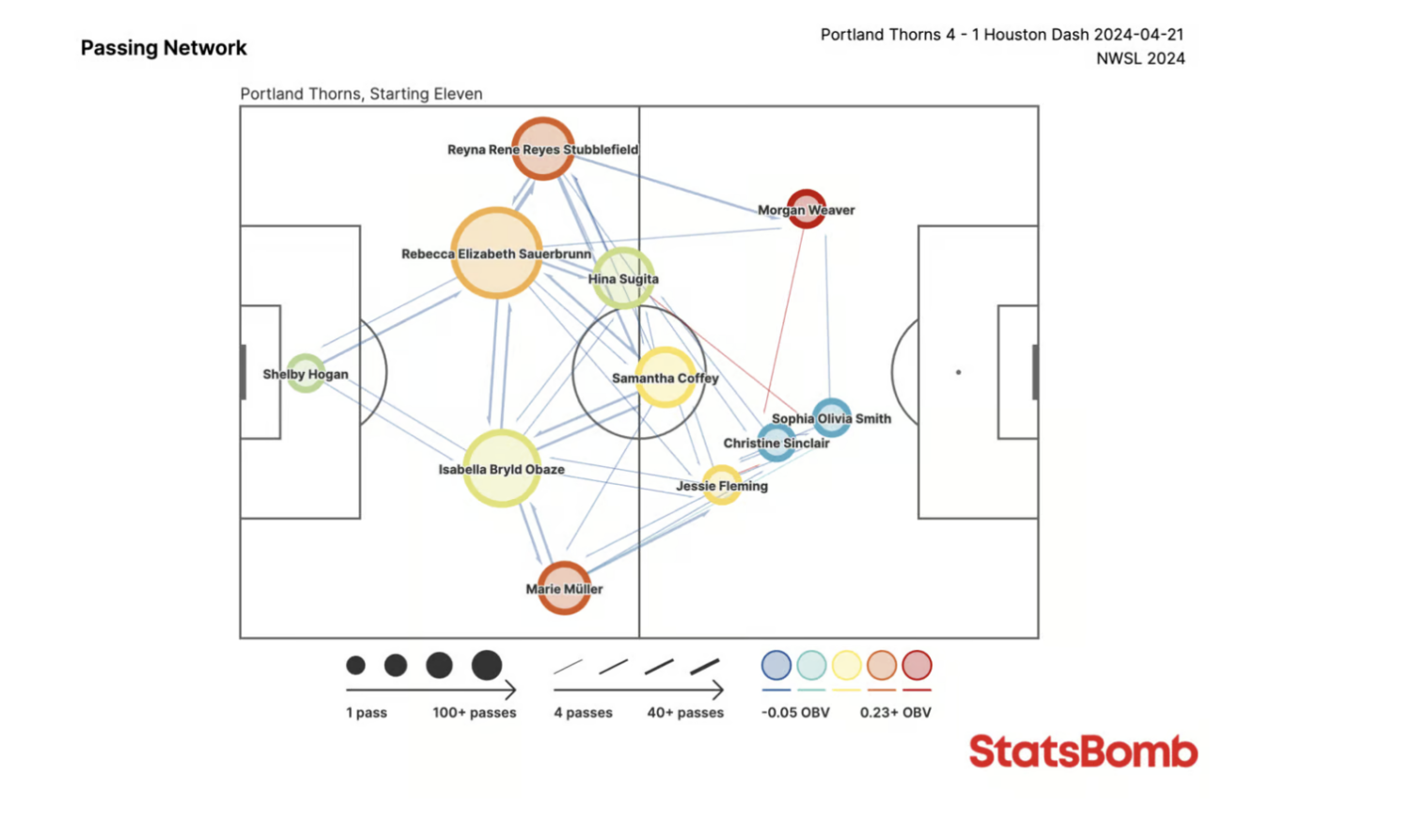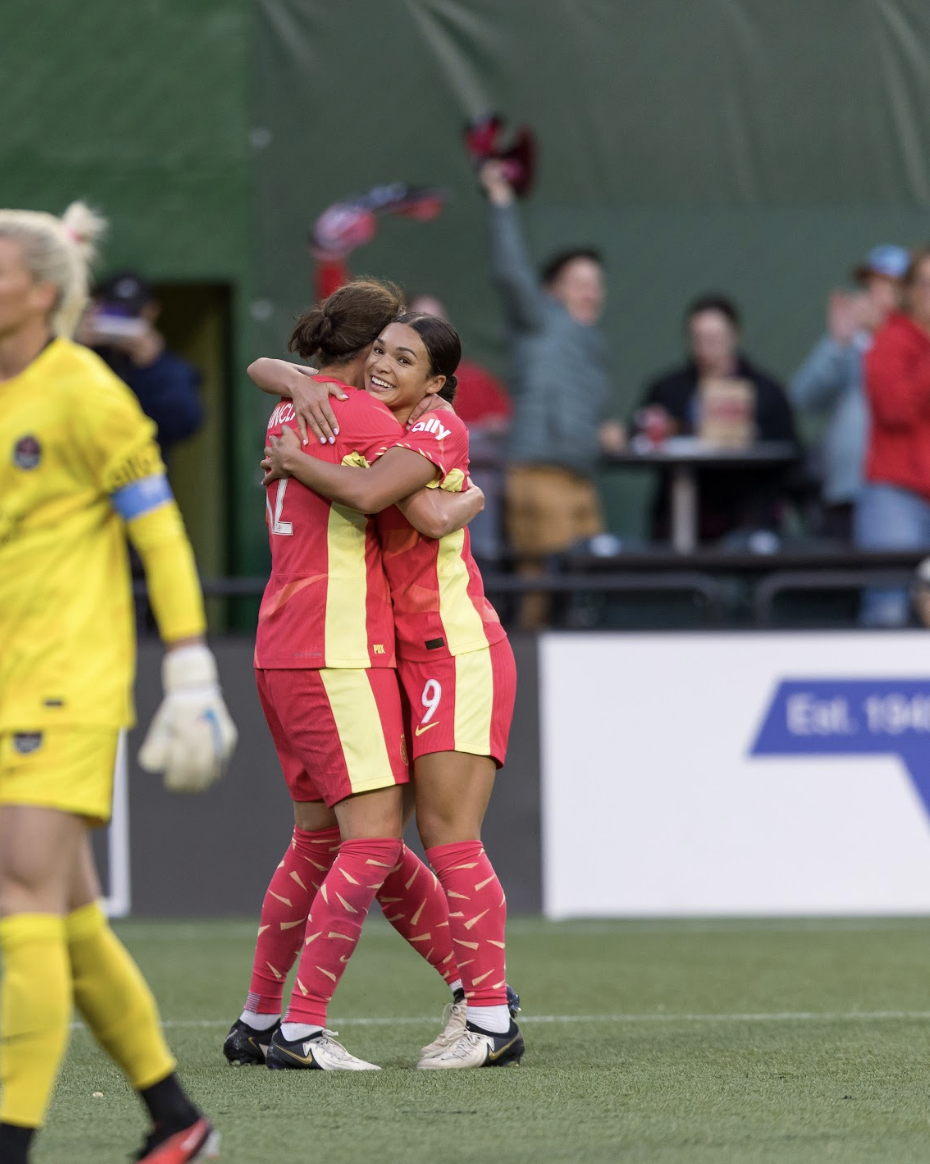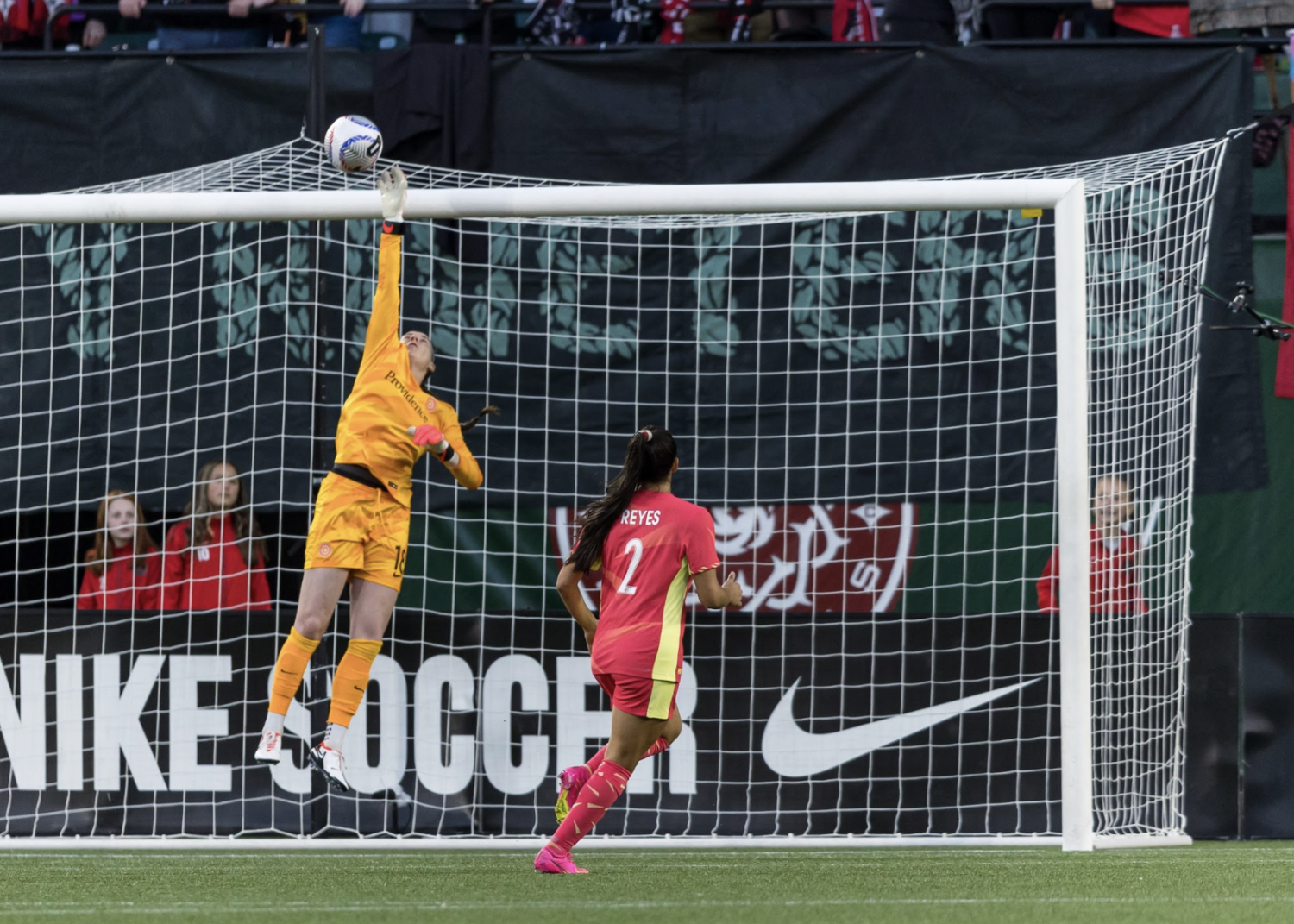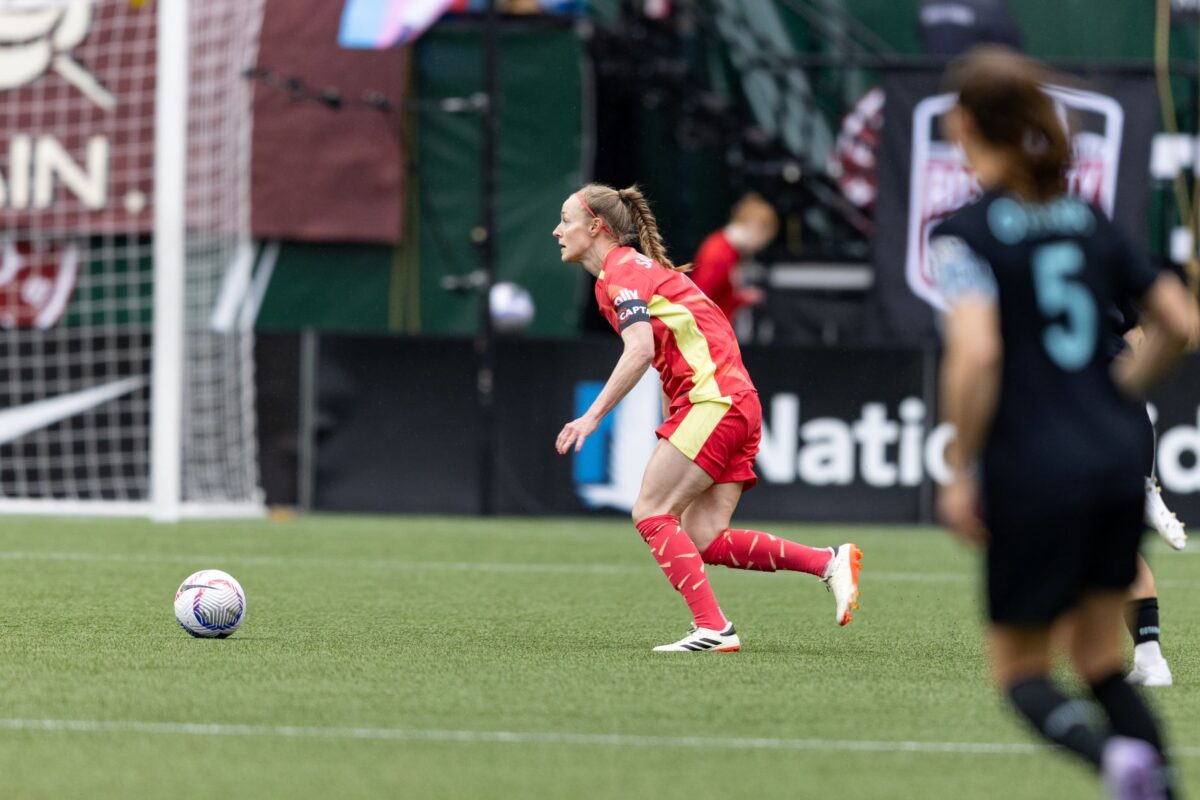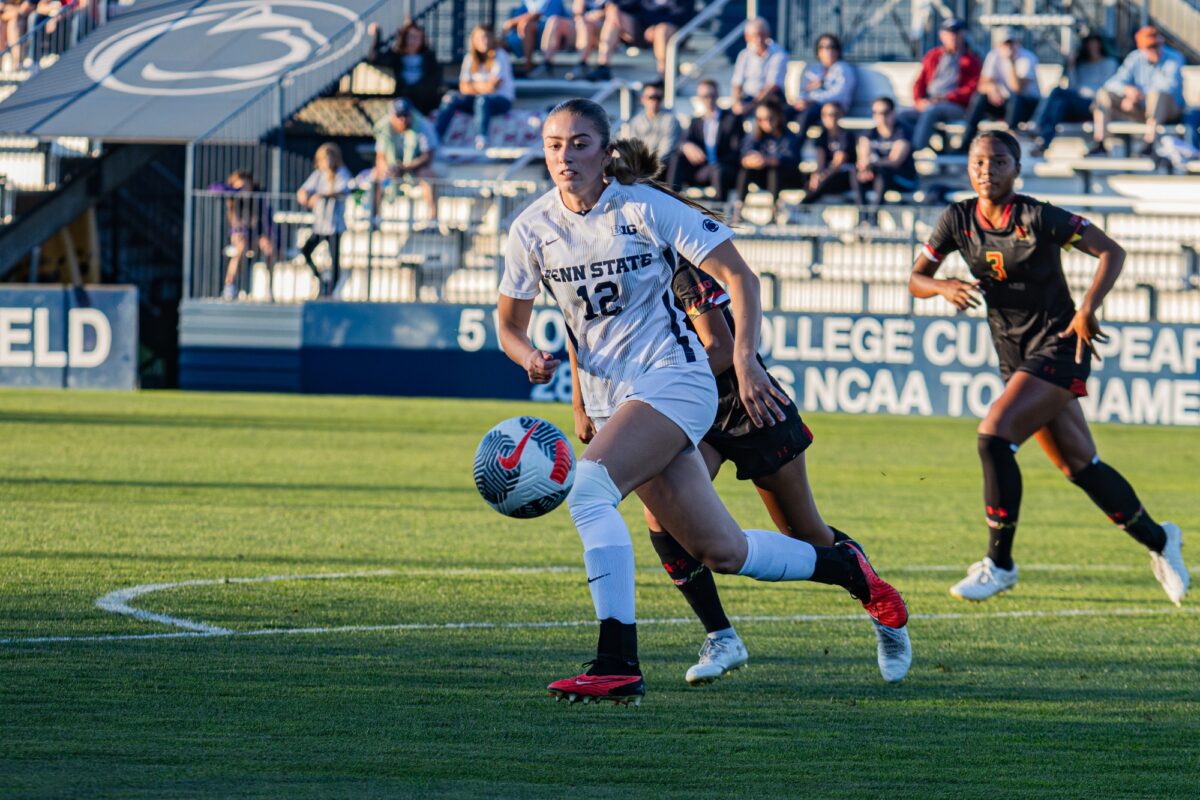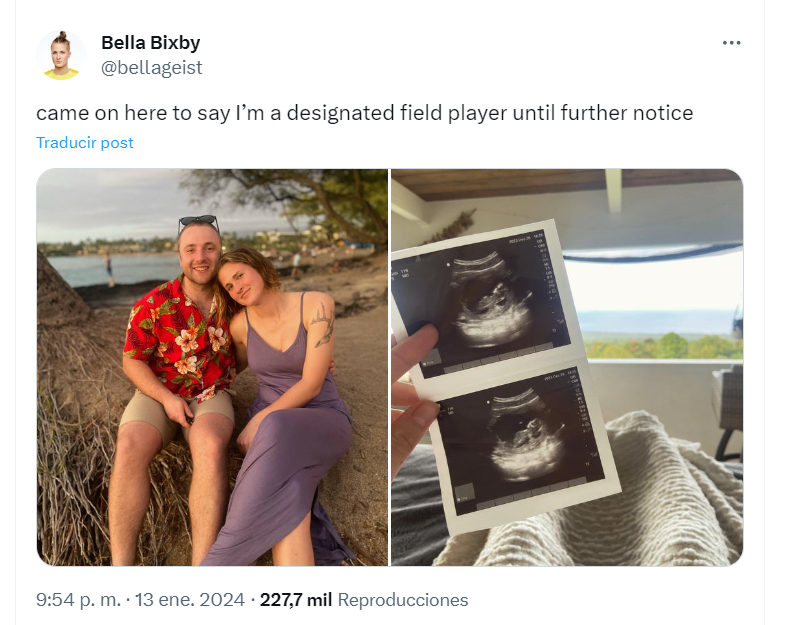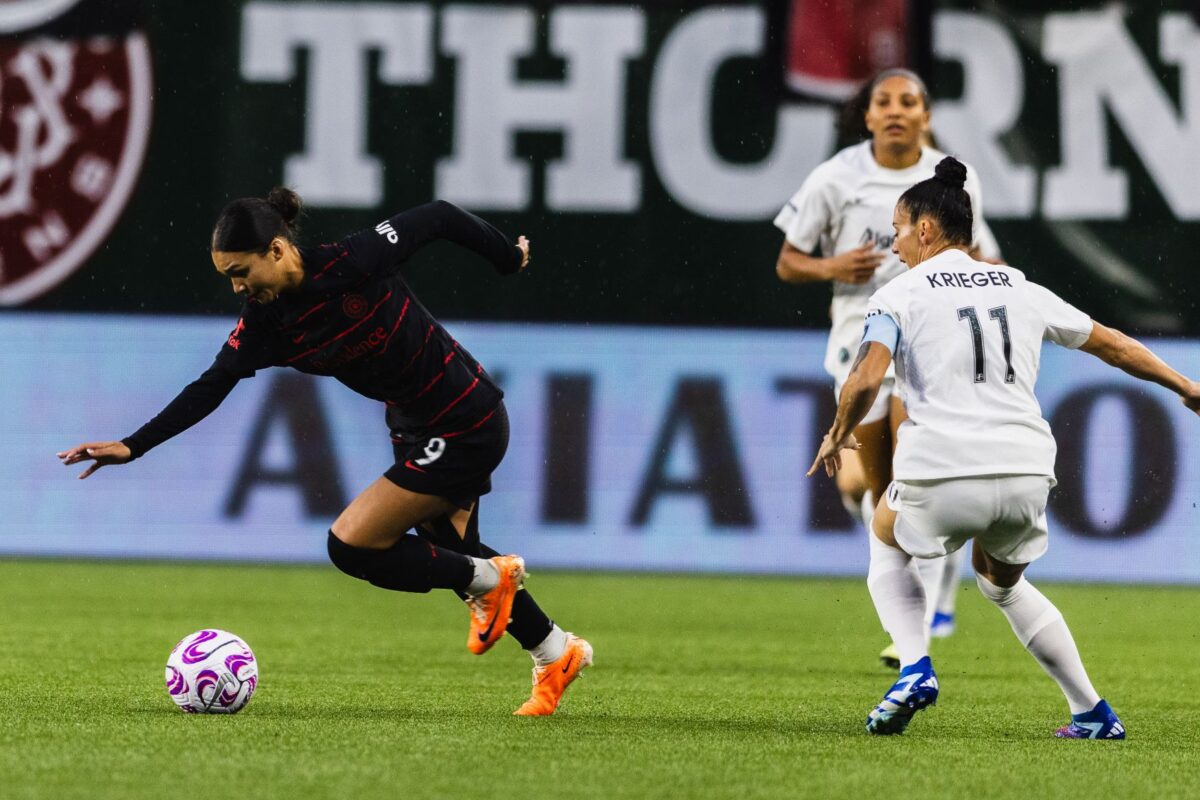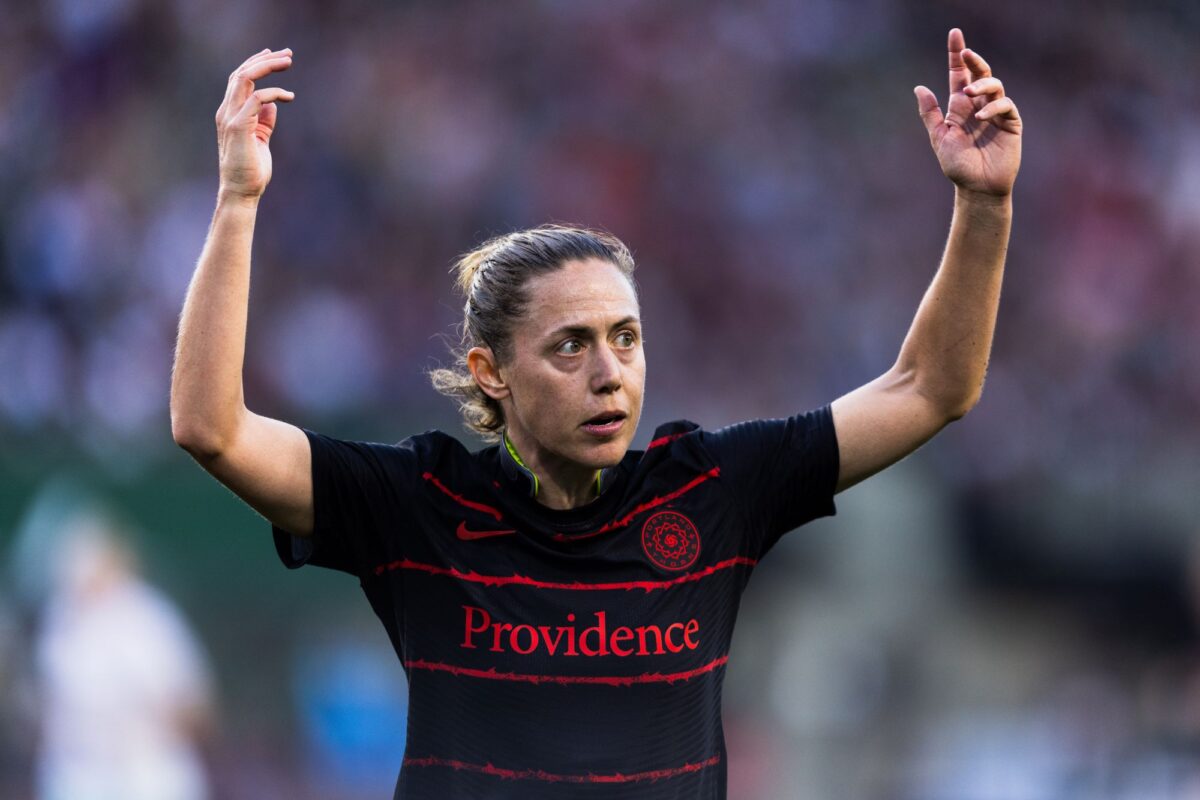The air in Providence Park on a Tuesday night is different. After a frustrating one-nil loss to the Seattle Reign on Friday, and with the possibility of losing five games in a row to NJ/NY Gotham, the Portland Thorns took the field with something to prove to both themselves and the fans.
The Thorns’ first multi-goal game of 2025 arrived in spectacular fashion: a 4-1 thrashing of the juggernaut Gotham. It’s not that the Thorns have been unable to get near the goal—which is what their three goals across their first five games may have suggested. In fact, it’s quite the opposite. The Thorns lead the NWSL in shots (60) and are second in expected goals (10.2), only behind Kansas City. With a front line whose most experienced players are sophomores Reilyn Turner and Payton Linnehan, it has taken a few matches for the young team to find their footing. The Thorns seem to be heating up at just the right time, before a congested slate of games before the league breaks for the Euros in June.
With such a quick turnaround between games—only two training sessions—the Thorns had very little time to focus in after Seattle. Speaking postgame, both Caiya Hanks and Jayden Perry credited the Thorns leadership team, in particular Sam Coffey and Jessie Fleming, for helping create the right mentality headed into Tuesday night.
“Sam gave us a great speech at the beginning: to play with intensity, and smile, and have fun, and that showed today,” Hanks said.
Perry focused on the Thorns’ change in approach to their training sessions as modeled by Fleming and Coffey, saying, “The intensity and response in the quality and the energy, we knew we could have given more in that game and gotten a different result. We had to switch our mindset, and that showed in this game.”
Head coach Rob Gale said postgame that “19 players featured between the two games,” and spoke of his pregame speech, which referenced the late Pope. “We have to do it together,” Gale said. “We are not a team of superstars. We are servants to the team, and are humble, serving something bigger than ourselves.”
Right from the whistle, these slight shifts were evident. The Thorns were on the front foot, and playing with intentionality as they moved the ball across the lines and into the penalty box.
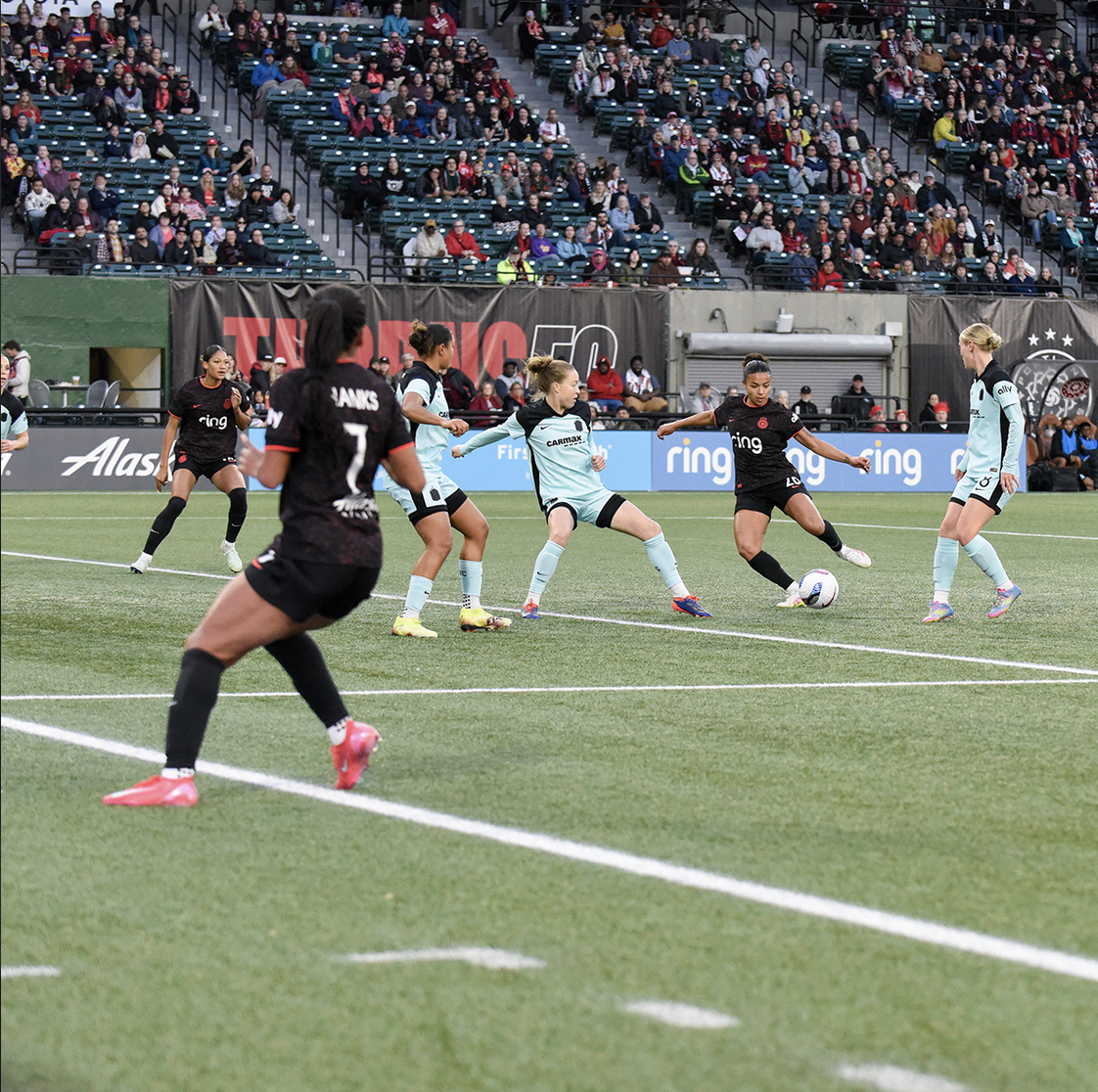
Mimi Alidou, the 29-year-old Canadian, started her first game for Portland nearly two weeks after she arrived in the city and quickly showed why the Thorns brought her over from Portugal midseason . In just the seventh minute, Alidou redirected a ball from Hanks into the back of the net with ease, a lá Christine Sinclair.
When speaking about Alidou, Hanks said that, even though the two don’t follow each other on Instagram yet, they “have this weird connection. I just knew that she was going to be there in the box,” she said. “It’s really cool when you meet someone and just know that you are going to have a really good connection on and off the field.”
Unfortunately, the celebrations did not last long. Thorns let Gotham respond immediately, and the game went into halftime tied at one. Credit to Gale, quite literally coaching for his job, for making tactical changes at half time. The first half had the Thorns playing on the back foot, defending Gotham (and allowing them just three shots). But after conceding, the Thorns never regained solid spells of possession and thus weren’t able to play the style of soccer that they needed to.
But Portland came out of the tunnel at half time flying. Finally, importantly, things were starting to click. The Thorns’ second half was one of their best in ages on both sides of the ball.
“We all knew we were due for a win,” Hanks said. “We had an issue with coming out slow in our last games, and we had to come out with the intensity and the fire. The games we come out fast are the games we win; we saw that in Utah. Once one or two go in, they just start flowing, and we were due for that.”
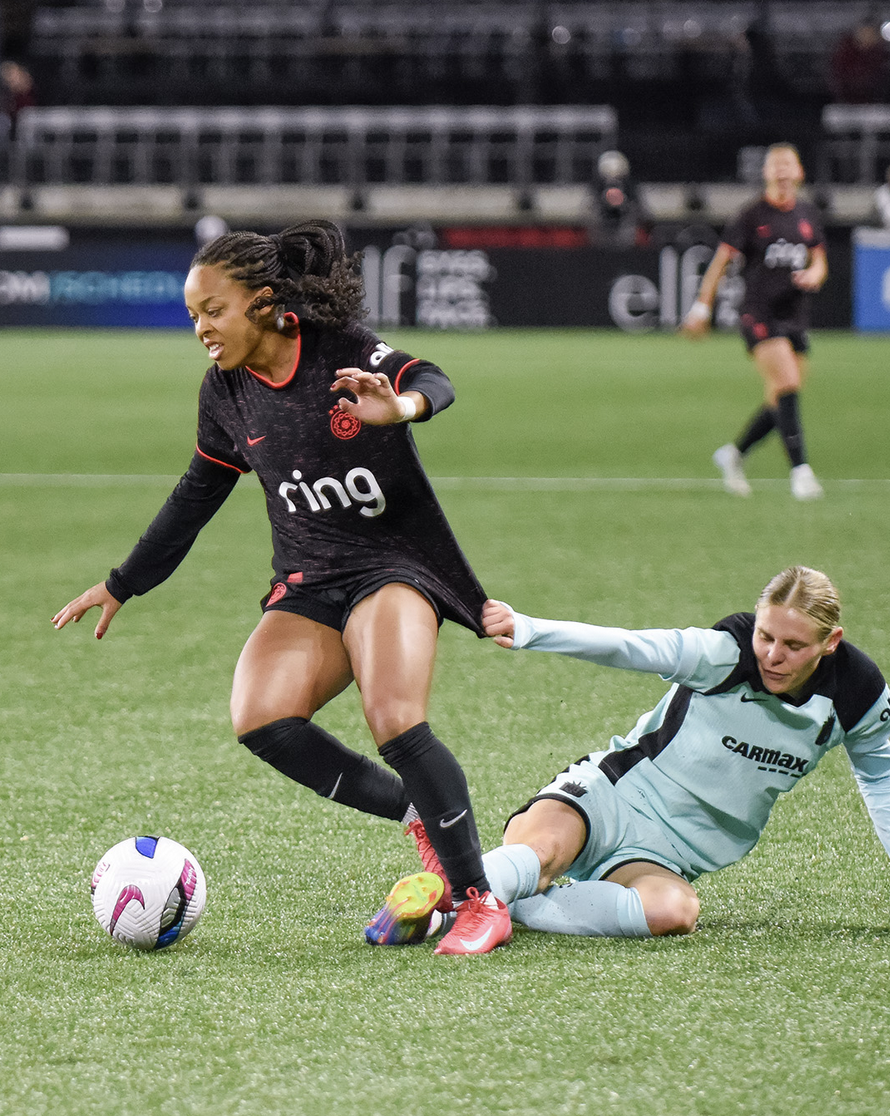
Hanks was the star of the show against Gotham. She had three shots on target and completely dominated Gotham’s right back on every dribble and pass. After recording her first career assist in the first half, she added her first professional goal in the second. When asked about what it felt like, she said, “I released all my thoughts, all my hesitations, and just hit it.”
With that, the flood gates were open. It seemed as though every touch was turning to gold, and the Thorns were running circles around Gotham, dictating the tempo and exhausting the traveling team.
The best sequence of the night was absolutely in the 70th minute when the Thorns won a penalty kick (without even needing a VAR review—how I love quick footballing decisions). Coffey stood over the ball, then, from the back line, came rookie Jayden Perry. She stepped up in front of a rowdy North End, and calmly sent Ann Katrin Berger, 2024 NWSL keeper of the year, the wrong way, becoming the first rookie to score a penalty this year.
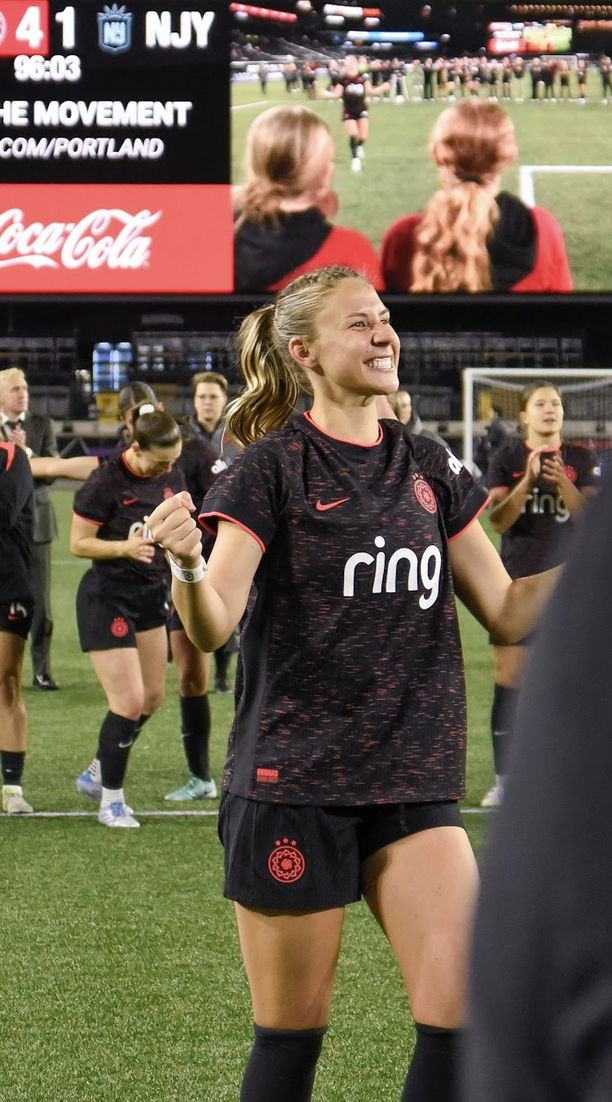
Perry said postgame that she advocated for herself early into the preseason. As the designated penalty kick taker during her time at UCLA, she had never missed. “I told Rob that I am confident in PKs, and that if he let me take them, I would do that job,” she said. “My teammates and my coaches put their trust in me, and I knew that they had my back.”
In addition to slotting home her first professional goal, Perry had a solid performance at center back, winning all but one of her ground duels and all of her aerial ones and making four clearances. She is only signed through this season, and with the Bhathal family in attendance on Tuesday, they should swiftly lock Perry down to a longer contract.
Perry added: “Little Jayden would be crying right now. It’s such a dream to play at this level, and scoring my first goal brings so much joy to me and my mom and my sister, who were here today. Today, we were playing with that passion that we had as little kids.”
The fourth and final goal of the night came from Deyna Castellanos, who broke a 23-game scoring drought by capitalizing off a rebounded shot. Soccer is a funny sport, because despite having a 50% passing completion rate, losing the ball 20 times (per SofaScore), and having zero clearances, blocks, interceptions, accurate crosses, or duels won, Castellanos still plays ninety minutes and scores a goal. My only hope is that the goal unlocks something within her, and she is able to be much more productive going forward.

There is still so much season ahead of the Thorns, but the win against Gotham was a statement to the rest of the league: Don’t underestimate the Thorns. We might be without Sophia Wilson and Morgan Weaver, but we have the best young talent in the league.
Maybe we should play more games on balmy Tuesday evenings in Portland.

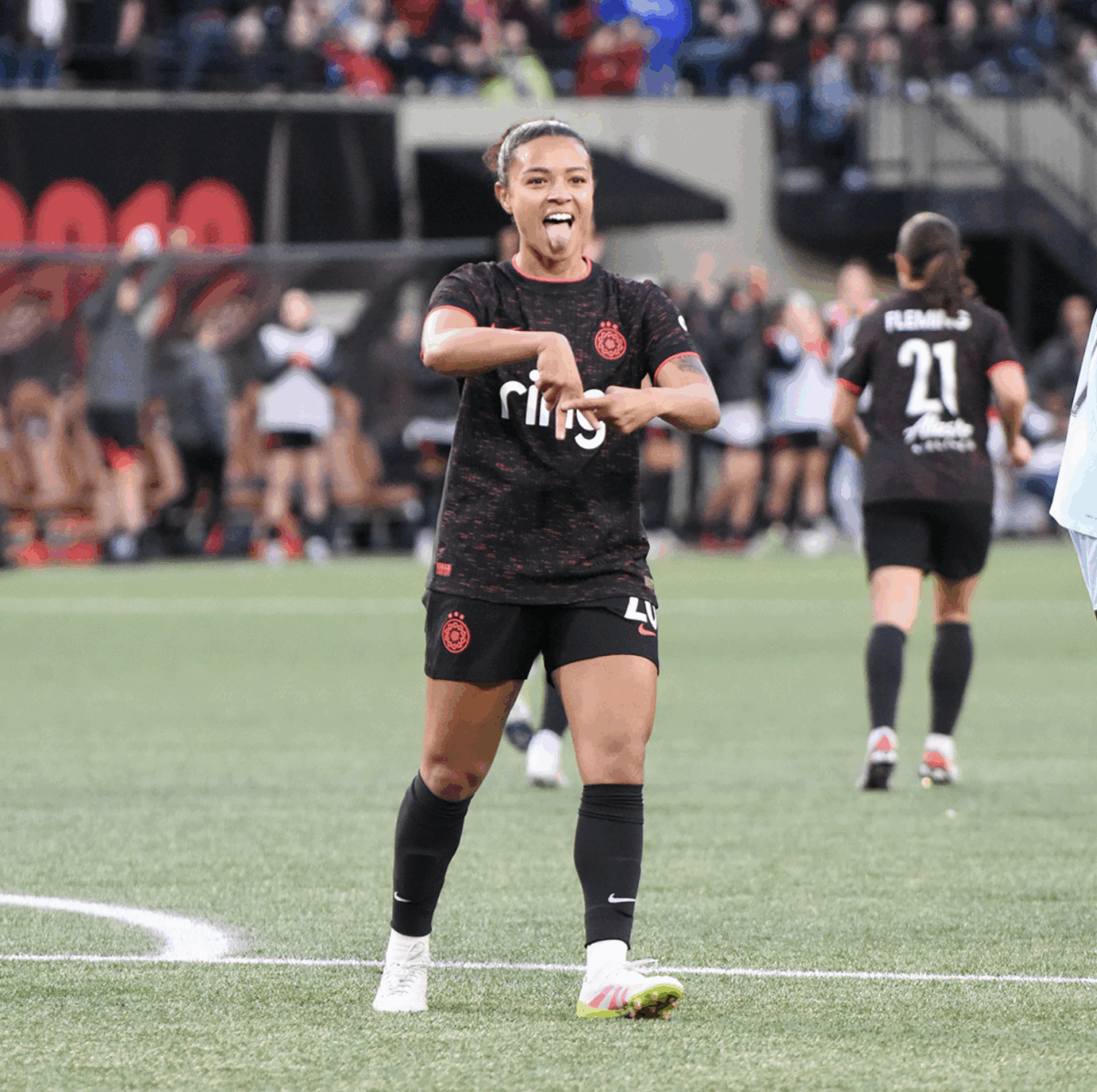



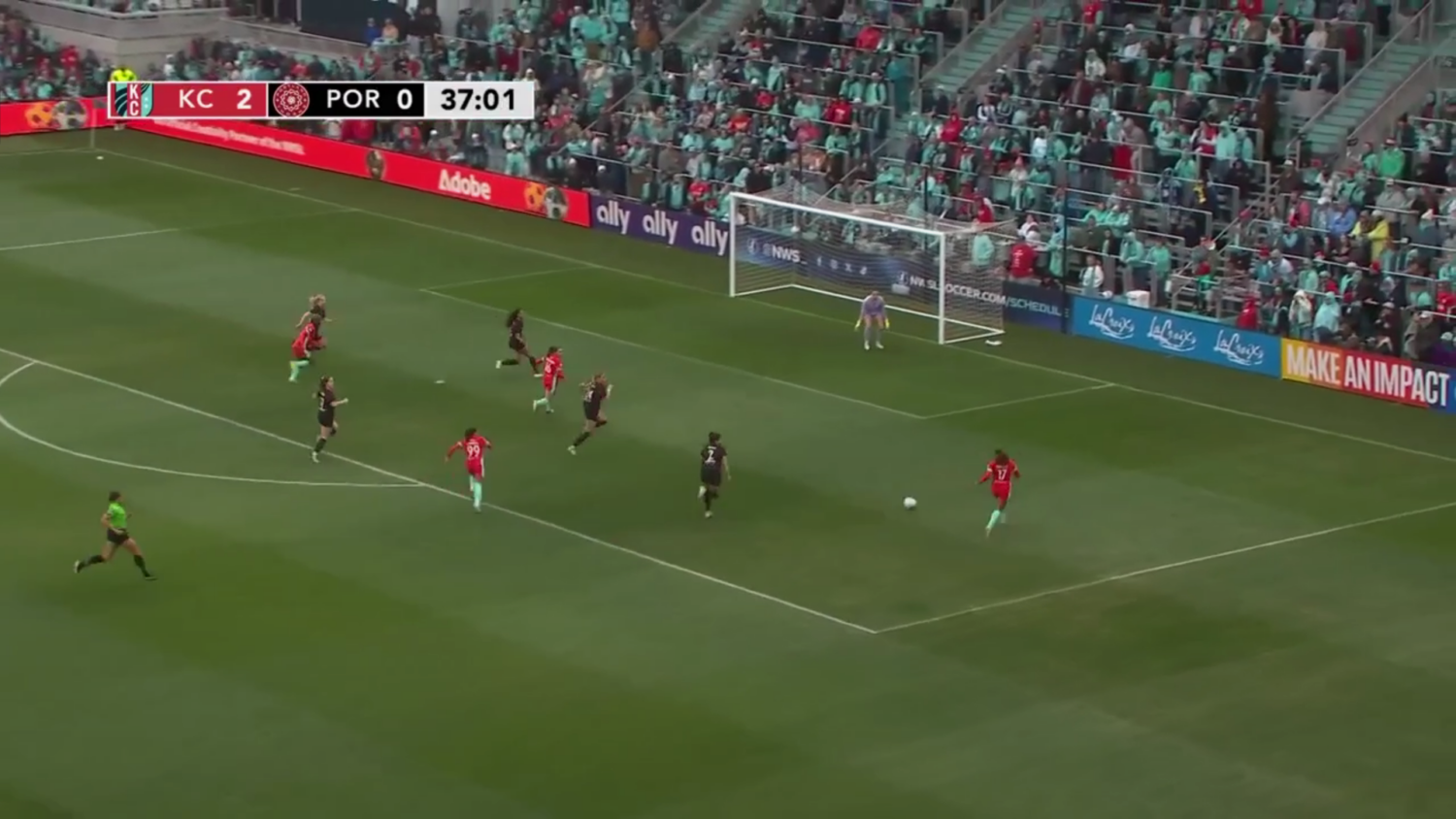

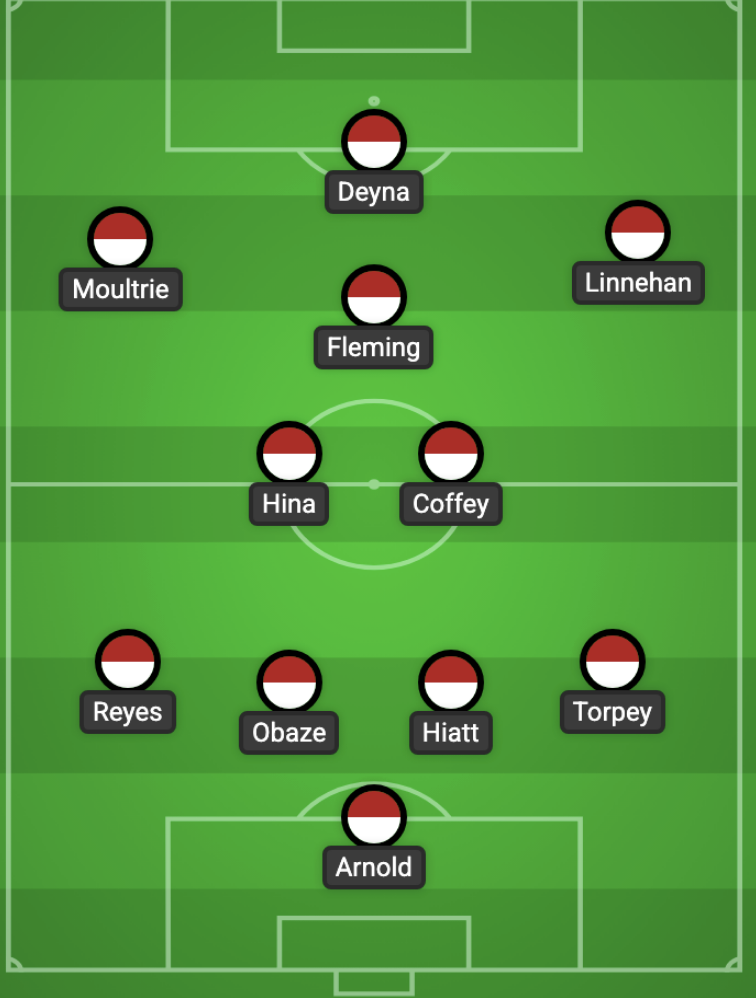

 Unlock with Patreon
Unlock with Patreon